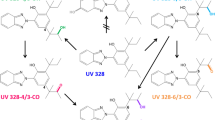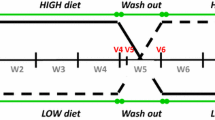Summary
In order to study the disposition of ENDOTELON in humans, this compound was labelled withl4C by photosynthesis. ENDOTELON consists of a complex of procyanidolic oligomers extracted from the seeds of a variety of vine cultivated in the Bordeaux wine-growing region, and is prescribed for the treatment of chronic venous insufficiency and retinal lesions.
Considering the difficulty in labelling the various constituents of the product, the labelling procedure was based on providing radioactive C02 to the plant. After isolation and purification, 150 mg of active material (50 μCf) was administered orally to six healthy volunteers. Radioactivity was measured in the blood over time until 72 and 120 hours in the same subjects after drug administration. Urinary and faecal elimination was measured for a period of 167 hours. Urinary elimination of the radioactive compounds represented 12 to 27% of the administered dose and faecal elimination represented 47 to 75% depending on the subject. The radioactivity of thel4C02 eliminated in the breath was also measured, and represented around 8% of the total radioactivity for the 72-hour period after administration.
Although the disposition of ENDOTELON is based on the total radioactivity measured over time, this technique allows the evaluation of the elimination rate of the product and its metabolites from the human body.
Similar content being viewed by others
References
SANOFI PHARMA (1985): Projet d’Information Scientifique pour le compendium Suisse des médicaments: SANOFI PHARMA A. G., Basel, November 1985.
Massin M. (1981): Action de I’Endotélon sur les rétinopathies diabétiques. Gat. Med. France 89: 3272.
Delacroix P. (1981): Etude en double aveugle de I’Endotélon dans l’insuffisance veineuse chronique. Rev. Med. 22: 1793.
Glasson B., Benakis A. (1966): L’étude métabolique des médicaments marques: description d’un plan expérimental. J. Lab. Comp. 2: 210–218.
Giasson B., Benakis A. (1971): The use of radioisotopes in drug metabolism. International Encyclopedia of Pharmacology and Therapeutics. Section 78, vol. 2, Pergamon Press.
Benakis A., Sugnaux F. R., Collet G. F., Kradolfer J. P., Berney C., Sion R., Necciari J., Cautreels W. (1986): Carbon 14 photosynthesis labelling of natural compounds and drugs from plants, In: Synthesis and Applications of Isotopically Labelled Compounds 1985, Elsevier Science Publishers B. V., Amsterdam, pp. 219–224.
Necciari J., Bourne M., Benakis A., Sion R., Cautreets W. (1986): HPLC analysis ofl4C-labelled procyanidolic oligomers, extracted from grape seeds after a photosynthesis procedure under a14CO2 atmosphere. Journées Internationales d’Etude du Groupe Polyphenols. Montpellier, France, Juillet 1986
Benakis A. (1975): Appareil automatique de combustion de matériel biologique contenant dul4C et du3H. Brevet Français No 7331315, Kerntechnik 17, 135.
Author information
Authors and Affiliations
Rights and permissions
About this article
Cite this article
Benakis, A., Schopfer, C. & Ritschard, J. Disposition of14C-labelled endotelon in humans. Eur. J. Drug Metabol. Pharmacokinet. 33, 37–43 (2008). https://doi.org/10.1007/BF03191017
Received:
Issue Date:
DOI: https://doi.org/10.1007/BF03191017




